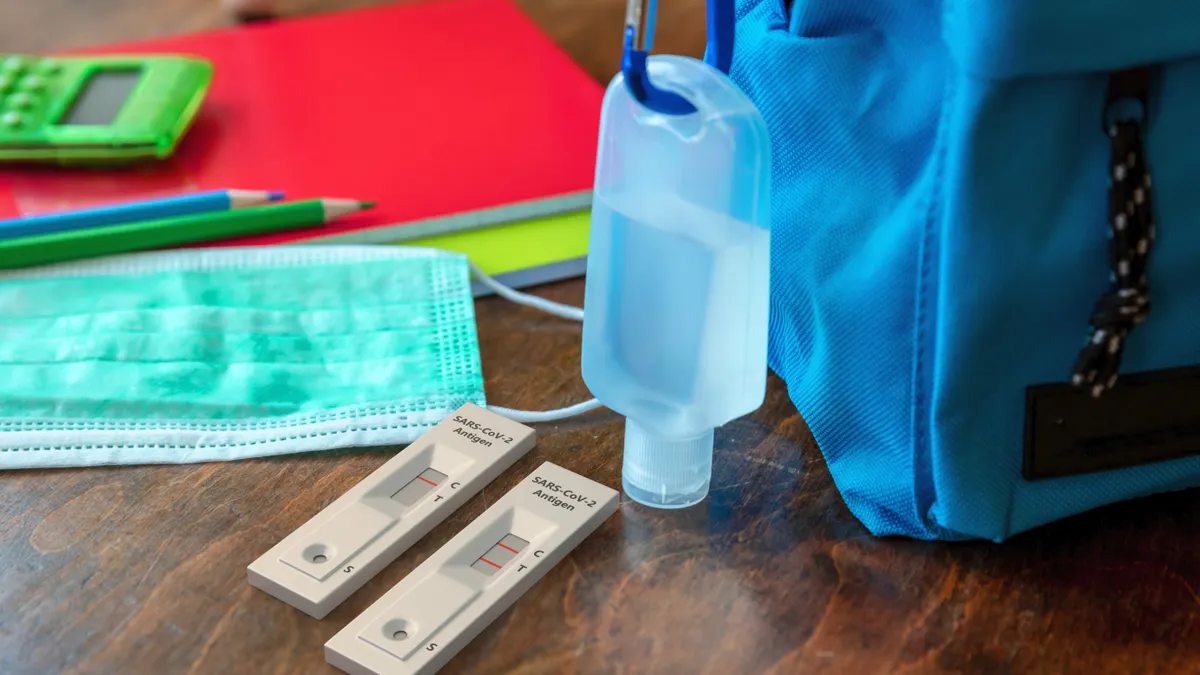UPDATE: March 1, 2024: The Centers for Disease Control and Prevention issued updated COVID-19 guidance for community settings that says people who have tested positive can return to normal activities when they are fever-free for at least 24 hours without taking medication, rather than undergoing a 5-day isolation period. CDC also recommends that those people use additional prevention strategies for the next 5 days to curb the virus’ spread.
Dive Brief:
- The Centers for Disease Control and Prevention may soon loosen the five-day COVID-19 isolation guidance that many school systems adopted to mitigate the virus's spread over the past several years, according to news reports.
- The Washington Post and other news outlets report the isolation guidance is under review by CDC and that officials want to align the COVID recommendations with ones for the flu and RSV. That would mean that people who have tested positive could return to school and work once they're fever-free for at least 24 hours without taking medication and their symptoms are mild and improving.
- The potential new guidance would come as schools are struggling to combat a drop in student attendance and stagnant academic performances blamed on pandemic-related setbacks that started nearly four years ago with the global onset of COVID.
Dive Insight:
While COVID is still being transmitted, access to vaccines and reduced severity of symptoms have already caused many communities to roll back isolation, masking and testing policies implemented when the virus posed a greater threat and led to high hospitalization and death rates.
Last month, the California Department of Public Health issued guidance similar to what CDC is considering implementing nationwide. Several school districts in the state have communicated that new guidance to their communities.
Practices across the country are mixed, however. Some communities long ago dropped required 5-day isolation periods for those testing positive for COVID but having no symptoms, while other localities have maintained the protocol.
The reactions to isolation policies in schools are mixed as well. Many say they helped to mitigate the virus's spread even as school staff had to track who had or hadn't met the 5-day isolation period. But others blamed the protocol for unnecessarily keeping students and staff away from school when they didn't feel sick.
A study published in October by the University of Southern California and Stanford University found children infected with COVID's Omicron variant remained infectious for a median of three days after testing positive.
“We’re basically saying five days is more than sufficient; public-health and education leaders may consider shorter durations,” said co-author Neeraj Sood, director of the COVID-19 Initiative and a senior fellow at the USC Schaeffer Center, in a statement at the time.
The Washington Post reports that it may be several months before updated COVID isolation from the CDC is finalized.













